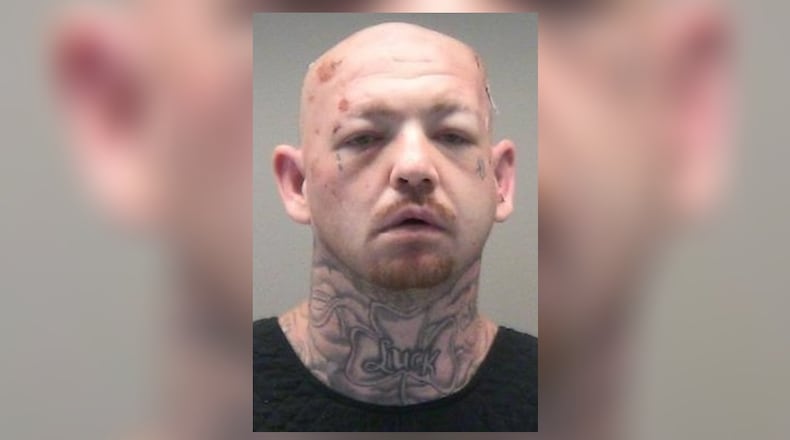Related: Stolen cruiser deaths: Who is Raymond Walters?
Gov. Mike DeWine asked the state prison department, which oversees the Adult Parole Authority, to review the circumstances of Walters’ prison release and supervision in Dayton. Since 2009, Walters had been in state prison three times for robbery, possession of drugs and theft, records show.
The governor said he expects the review to be concluded in the near future.
Credit: DaytonDailyNews
It is the second time this year that DeWine has asked for review and reform within the Ohio parole system.
In May, following an investigative report by the Dayton Daily News, DeWine announced a slate of changes for the Ohio Parole Board to make it more transparent, add new members from different backgrounds, improve training and develop new guidelines for how the board weighs inmate misconduct.
Related: Gov. DeWine calls for parole board changes after DDN story
Ohio Department of Rehabilitation and Correction Director Annette Chambers-Smith said systemic reviews of parole and post-release supervision as well as the Ohio Parole Board are a good idea.
“I think we do a lot of back to basics and things like that with the prisons and I think we should also be doing it with the parole side of the house,” she said.
The Adult Parole Authority’s 490 parole officers supervise 37,000 Ohioans who are on parole, post-release control or probation.
Credit: DaytonDailyNews
The Ohio Parole Board, which has up to 12 members appointed by the DRC director, has discretionary authority over the release of about 9,000 inmates.
Walters’ release was not subject to the discretion of the Ohio Parole Board.
In 1996, state criminal sentencing law changed so offenders are given definite sentences, rather than ranges of time, such as five to 15 years. Inmates sentenced under “old law” and those serving life sentences for certain violent felonies such as murder are under the jurisdiction of the Parole Board. Prisoners such as Walters are released when they’ve served their time and often are under court-ordered supervision once they’re out of prison.
Chambers-Smith said details of how people are supervised after prison release are not made public. Often supervision includes check-ins with parole officers, drug tests, required classes and employment, she said.
She declined to discuss the ongoing investigation into what happened with Walters’ supervision.
“This is a horrible tragedy,” Chambers-Smith said.
In the Dayton office of the Adult Parole Authority, officers each handle on average 85 to 92 cases from a 12-county region, according to DRC stats. Chambers-Smith said recent changes in the state budget bill will provide money for local agencies to supervise people on probation, which will reduce the caseload for state parole officers. That change was in the works before the Walters case.
DeWine said the workload of parole officers may need to be examined further. He added “How do we supervise people when they come out of prison? It may need a big picture look.”
Meanwhile, Chambers-Smith is continuing to make changes to the Ohio Parole Board, including allowing inmates to participate in full board hearings via videoconferencing, live-streaming those hearings on the OhioChannel.org, clearing a backlog of cases and appointing new board members with diverse professional experience.
Late last year, former state lawmaker Shirley Smith resigned from the Parole Board and issued a public rebuke of the system. Inmates, attorneys, crime victims and legislators have lodged complaints that the board operates largely behind closed doors and fails to share information.
Related: Ohio Parole Board under fire from victims, inmates, lawmakers
Related: Ohio Parole Board member quits, calls agency toxic and secretive
In June, Chambers-Smith issued a memo to Ohio’s 50,000 inmates titled “Parole Board Transformation.”
Other steps in development include:
* Using a tool to weigh the severity of inmate rule infractions when considering parole,
* Giving inmates information at the start of incarceration about how to prepare for parole hearings, * Increasing staff training,
* Giving inmates a clear path to seek reconsideration of parole denials if they believe faulty information was used,
* Using volunteer “navigators” to assist inmates when they appear before the Parole Board.
“The Ohio Parole Board transformation will encourage you to stay focused on doing the right things, so that your reentry can be successful. Phase two of the transformation will begin in the near future,” Chambers-Smith told inmates in the June memo.
About the Author



